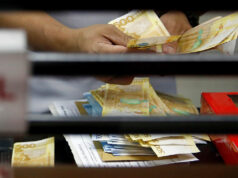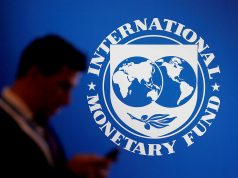Kia rebrands with new logo and philosophy
Massive changes will surely future-proof the global car maker
By Kap Maceda Aguila
EVEN AS its 15-year-old slogan “The power to surprise” will be mothballed in favor of “Movement that inspires,” Kia Motors pulls off a, well, surprise.
Last week, Kia unveiled a vastly changed logo — embodying what it calls its “new brand purpose and ambitions for the future.” The company also drops the word “motors” from its moniker.
During an online showcase, Kia President and CEO Ho Sung Song said, “At Kia, we believe that transportation, mobility, and movement represent a human right. Our vision is to create sustainable mobility solutions for consumers, communities, and societies globally. Today, we start putting this vision into action with the launch of our new brand purpose and strategy for the future.”
The South Korea-headquartered car maker did some “deep introspection” and interviewed industry experts, Kia employees and customers, and even “those who have never considered buying Kia to objectively hear how people feel about us,” said Mr. Song.
“These voices are the reason for our transformation, the reason to reinvent ourselves, and the reason why we are relaunching the Kia brand,” he continued. Kia now rolls out a “new brand purpose, new corporate mission, new business direction, new design philosophy, and a new working culture that empowers (its) employees and puts… customers at the heart of actions and discussions.”
In a recent press conference, Kia Philippines Marketing Director Franz Decloedt said that the old tagline was better suited to an underdog brand. “‘Movement that inspires’ captures our brand purpose and (denotes a) future-leading quality. We are bold, connected, and expansive,” he underscored. “It’s not just a logo change.”
Kia wants to move away from what it calls its “traditional manufacturing-driven business model,” reflected in its dropping “motors” from its name. The firm promises to “expand into new and emerging business areas by creating innovative mobility products and services to improve customers’ daily lives.”
The new brand purpose envisions Kia as meeting “changing customer expectations about how they move, and how their movement impacts the world around them. Consumers are increasingly seeking out flexible, environmentally conscious, and integrated forms of transportation.”
Meanwhile, new brand strategy calls for the company to “respond to — and shape… changing expectations by developing a range of products and services to meet customers’ needs in markets around the globe. These will offer greater access to a wider range of environmentally conscious mobility products and services to meet growing demand from customers worldwide for flexible, customizable, individualized mobility solutions, enabled by data and new technologies.”
The company also vows to promote “more sustainable production” by using clean energy and recyclable materials, and commits to develop seven battery electric vehicles (BEVs) by 2027 — a lineup comprised of passenger vehicles, SUVs and MPVs “across several segments, each incorporating industry-leading technology for long-range driving and high-speed charging from Hyundai Motor Group’s new Electric-Global Modular Platform (E-GMP).” Kia is also looking at producing a range of purpose-built vehicles (PBVs) for corporate customers as the firm anticipates demand for these to grow five times by 2030, fueled by growth in e-commerce and car-sharing services.
The global brand said it will roll out the first of its next-generation BEVs (which will boast a crossover-inspired design) by the first quarter, but Kia Philippines stated that the earliest we can see these is next year.
The firm added that this vehicle will have a driving range of over 500 kilometers and promise a high-speed charging time of under 20 minutes. This new vehicle will also be the first to receive the new logo. “With its growing range of BEVs, Kia is targeting a 6.6% share of the global BEV market by 2025, and global annual sales of 500,000 BEVs by 2026.”
The rebranding will be cascaded here as early as the second half of the year, according to Kia Philippines, with the corporate image rolling out to dealerships within two to three years.



